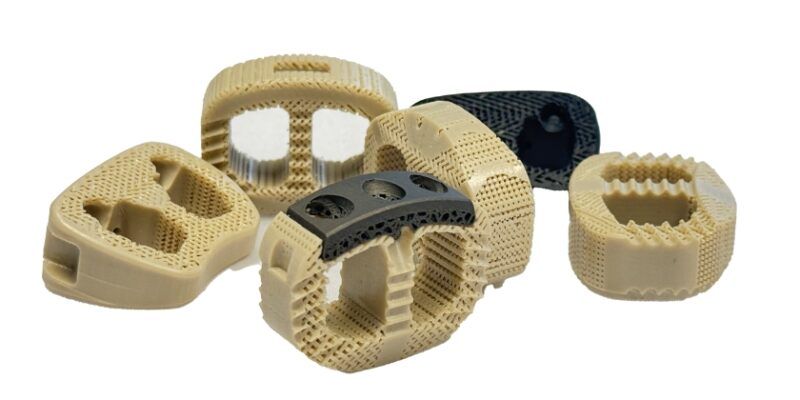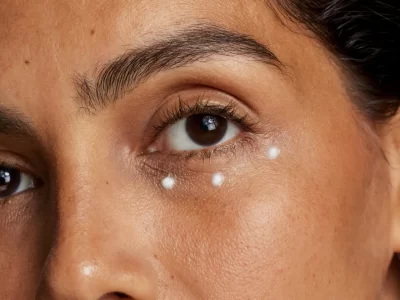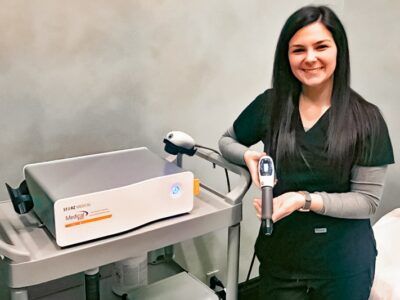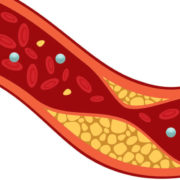In the world of spinal implants, materials matter, and few have gained as much traction in recent years as Polyether Ether Ketone, commonly known as PEEK. Dr. Larry Davidson, an experienced surgeon in the field, explains that PEEK’s rise is largely due to its unique combination of strength, elasticity and compatibility with the human body. This high-performance polymer is reshaping how surgeons approach spinal fusion, disc replacement and interbody cage procedures.
Unlike traditional metallic implants, PEEK offers a more bone-like mechanical profile and radiolucency, making it easier to track healing and fusion. As research and design technologies develop, PEEK continues to establish itself as a go-to solution in modern spinal surgery, especially when patient-specific recovery and biomechanical harmony are top priorities.
What Is PEEK and Why Is It Used in Spine Surgery?
PEEK is a thermoplastic polymer known for its high strength-to-weight ratio, chemical resistance and impressive mechanical properties. Originally used in aerospace and industrial applications, it quickly found its way into healthcare due to its biocompatibility and stability under physiological conditions.
In spinal surgery, PEEK is primarily used for interbody fusion cages, vertebral body replacements and structural spacers. It offers a modulus of elasticity close to that of cortical bone, typically around 3.6 GPa, which means it can deform slightly under load and share stress with surrounding structures rather than absorbing all of it. This property significantly reduces the risk of stress shielding, a common issue with stiffer metallic implants.
Advantages of PEEK in Spinal Procedures
Several clinical and biomechanical advantages drive PEEK’s growing use in spinal applications:
- Elastic Modulus Similar to Bone: PEEK’s bone-like stiffness ensures better load sharing and reduces the risk of subsidence or implant loosening over time.
- Radiolucency: Unlike titanium or other metals, PEEK does not interfere with X-rays, CT scans or MRIs. It allows for clearer postoperative imaging to monitor bone healing and fusion.
- Biocompatibility: PEEK is well-tolerated by the body and does not trigger inflammatory or immune responses. Its inertness makes it suitable for long-term implantation.
- Customizability: PEEK can be manufactured in various shapes, sizes and porosities, and it can be combined with additives or coatings to enhance bone integration.
These features make PEEK especially valuable in procedures that require precision, long-term monitoring and patient comfort.
Enhancing PEEK with Surface Modifications
One of PEEK’s historical limitations is that, despite being biocompatible, it is bioinert; it does not naturally encourage bone growth. To address this, researchers have developed ways to improve PEEK’s surface characteristics.
- Titanium Coating: Applying a thin layer of titanium to PEEK implants provides an osteoconductive surface while retaining the benefits of the core material.
- Hydroxyapatite (HA) Coating: HA is a naturally occurring mineral found in bone. Coating PEEK implants with HA encourages cellular attachment and bone bonding.
- Surface Texturing and Porosity: Advanced manufacturing techniques, including 3D printing, are now being used to create PEEK implants with roughened or porous surfaces. These modifications mimic trabecular bone and promote osseointegration.
With these enhancements, PEEK becomes not just a passive material but an active participant in bone healing and fusion.
Clinical Applications of PEEK in the Spine
PEEK is used across a wide range of spinal procedures, including:
- Cervical and Lumbar Interbody Fusion (ACDF/PLIF/TLIF): PEEK cages help maintain disc height and restore spinal alignment while encouraging fusion.
- Anterior Lumbar Interbody Fusion (ALIF): PEEK implants are often used to provide structural support and promote bone healing in weight-bearing spinal levels.
- Vertebral Body Replacement (VBR): In trauma or tumor cases where vertebral bodies must be removed, PEEK-based replacements can restore spinal integrity with a lower risk of imaging distortion.
- Motion Preservation Devices: Some experimental or hybrid devices include PEEK components to allow for partial flexibility in spinal motion.
Surgeons choose PEEK for cases where clinical goals include reducing implant visibility on scans, mimicking natural bone behavior or enhancing patient comfort.
Patient Benefits and Recovery Outcomes
Patients receiving PEEK implants experience smoother recoveries due to better alignment with their spine’s natural biomechanics. The material’s elasticity helps prevent the overloading of adjacent levels, reducing the chance of adjacent segment disease. In addition, fewer imaging artifacts make it easier for surgeons to assess recovery without the need for exploratory procedures.
Patients also benefit from lower inflammation rates and improved post-op comfort. For long-term monitoring, radiolucent implants like PEEK simplify follow-ups, offering a clear view of fusion progression and potential complications.
Limitations and Considerations
While PEEK offers many advantages, it isn’t perfect. Its lower stiffness may not be suitable for patients with severe instability or high body weight where greater structural support is needed. In such cases, titanium or hybrid implants may still be preferred.
Not all PEEK implants are created equal; surface treatment, manufacturing consistency and design integrity all affect the device’s performance. Surgeons must assess these factors, along with the patient’s condition, when choosing PEEK-based solutions.
Dr. Larry Davidson notes, “If the progress that has been made in this field, just in the last decade, is any indication of the future, then I would predict a continuation of significant advances not only in surgical approaches but also the technology that helps the spine surgeon accomplish his/her goals. It’s next to impossible not to be excited about what’s around the corner in our journey of progress.” His perspective reinforces the importance of continuous innovation in materials like PEEK, ensuring that evolving technologies can better match patient needs and surgical goals.
Research and Innovation in PEEK Technology
Ongoing research continues to push the boundaries of what PEEK can do in spinal applications. Scientists are now exploring bioactive PEEK composites, multi-material implants and smart sensors embedded within PEEK devices to provide real-time feedback on healing.
Other innovations include personalized PEEK implants, which are 3D printed from patient-specific imaging data and offer precise fit and improved alignment. As AI and data-driven modeling become more integrated into surgical planning, PEEK’s role is expected to expand even further, offering custom-tailored solutions in real-time.
Looking Ahead: PEEK’s Expanding Impact
The emergence of PEEK from an industrial polymer to a cornerstone of spinal surgery underscores its versatility and value. As newer versions of PEEK continue to emerge, engineered for better bone growth, smarter diagnostics and improved load sharing, its position in spine care can only grow stronger.
PEEK’s continued innovation reflects a broader shift toward implants that work with the body, not against it. Whether used alone or as part of hybrid systems, PEEK is helping surgeons deliver better outcomes, faster recoveries and a more personalized approach to spinal health.













Comments